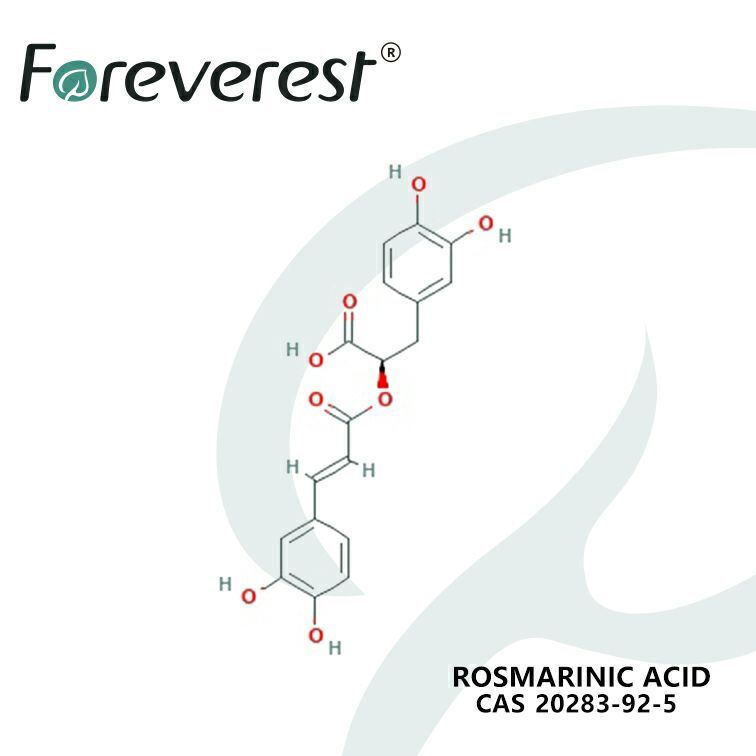Rosmarinic acid
Rosmarinic acid is a naturally occurring polyphenolic compound widely found in various Lamiaceae plants such as rosemary, sage, mint, and basil. Chemically, it is an ester of caffeic acid and 3,4-dihydroxyphenyllactic acid. It is considered a natural, highly efficient, and well-stable antioxidant and a green food additive. It exhibits low toxicity and is generally considered safe. In terms of solubility, it is slightly soluble in water but readily soluble in alcohols and oils.
Research indicates that rosmarinic acid has a strong effect in scavenging free radicals, and its antioxidant activity is stronger than that of Vitamin E. It also possesses broad-spectrum antimicrobial, antiviral, anti-inflammatory, anti-tumour, anti-platelet aggregation, antithrombotic, antiangiogenic, and antipsychotic properties, as well as the function of fighting neurodegenerative diseases.
Substance Identification
| Synonyms | Rosemary extract | Rosemary acid | Rosmarinicacid | Labiatenic acid | RosA |
| CAS | 20283-92-5 |
| EINECS | 606-487-1 |
| FEMA | N/A |
| HS.CODE | 291899 |
| Molecular Formula | C18H16O8 |
| Moleclar Weight | 360.32 |
Application & Uses
- Food and Health Supplement Sector: Widely used as a natural antioxidant in food; applied as condiments in food flavouring; a potential ingredient in anti-aging and strong weight-losing agents; and explored in the treatment of cardiovascular diseases.
- Daily Chemicals & Flavours/Fragrances: Utilised in fragrance formulations for daily chemicals (e.g., body lotions, cleaners, shampoos, soaps); also used in flavourings such as mints, spices, and fruity citrus notes, and for the reconstitution of essential oils like lavender and geranium.
- Pharmaceutical Research & Others: Can be used as an intermediate to antibacterial agents and a natural preservative; suitable for dermatological and topical treatments (e.g., skin infections, fungal infections); and serves as a solvent.
Sales Specification
| ITEM | VALUE |
|---|---|
| Appearance | Light yellow or brown powder |
| Content, % | 5 to 30 |
Package
- Drum, 25kg net each. Vacuum packing with plastic bags and the aluminium foil/plast bag inside
GHS Hazard Statements
| H-Code | H400 |
| P-Code | P264/270/273 |
| Response | P301+P310 P321 P330 P391 |
| Storage | P405 |
| Disposal | P501 |
Storage
- Temperature, Moisture, Light & Ventilation: Store within the specified temperature range in a dry, well-ventilated area, and protect from light.
- Container Integrity & Labelling: Ensure containers are tightly closed and clearly labelled. Earth powdered or flammable liquids to prevent static build-up.
- Isolate from Hazards: Keep storage areas away from heat, sparks, open flames, and all incompatible materials.
- Safe Handling & Inspection: Handle carefully, and stack stably. After prolonged storage, always check quality before use.
- Compliance & Emergency: Strictly comply with all safety regulations, and ensure emergency plans are in place.
Remark
Start Purchasing
-
Minimum Order Quantity
Quote required -
Lead Time
Quote required -
Available Incoterms
Quote required -
Regional Availability
Quote required
